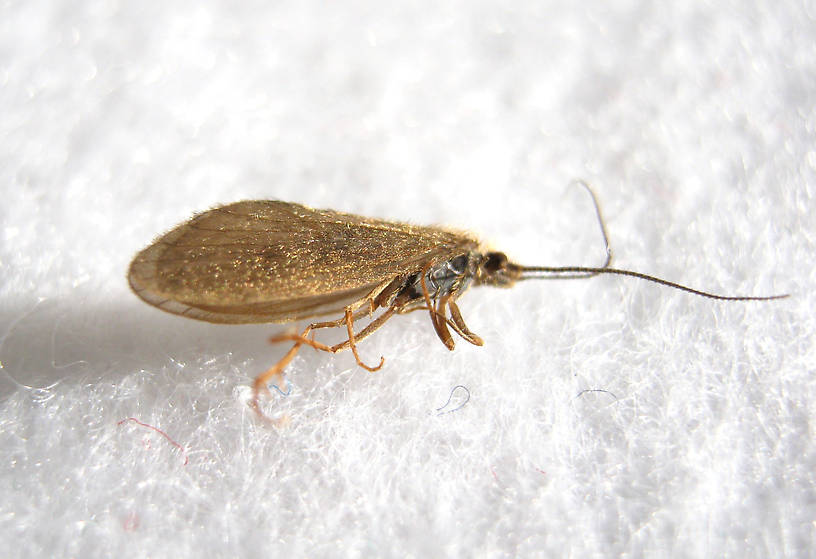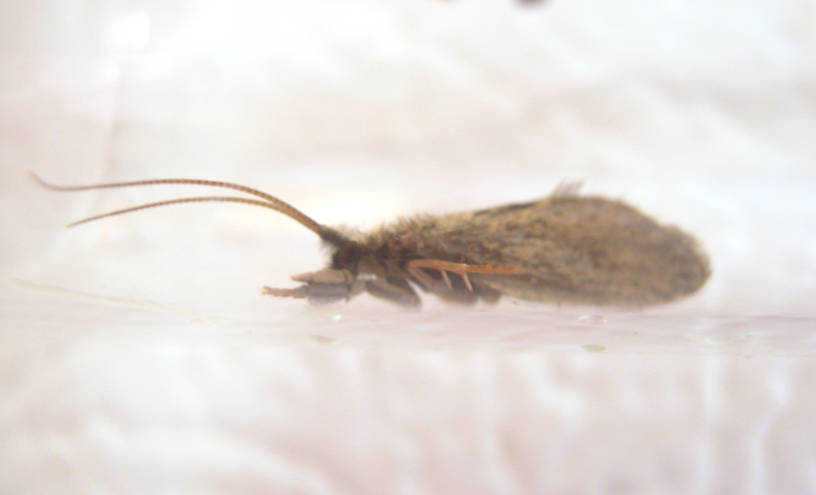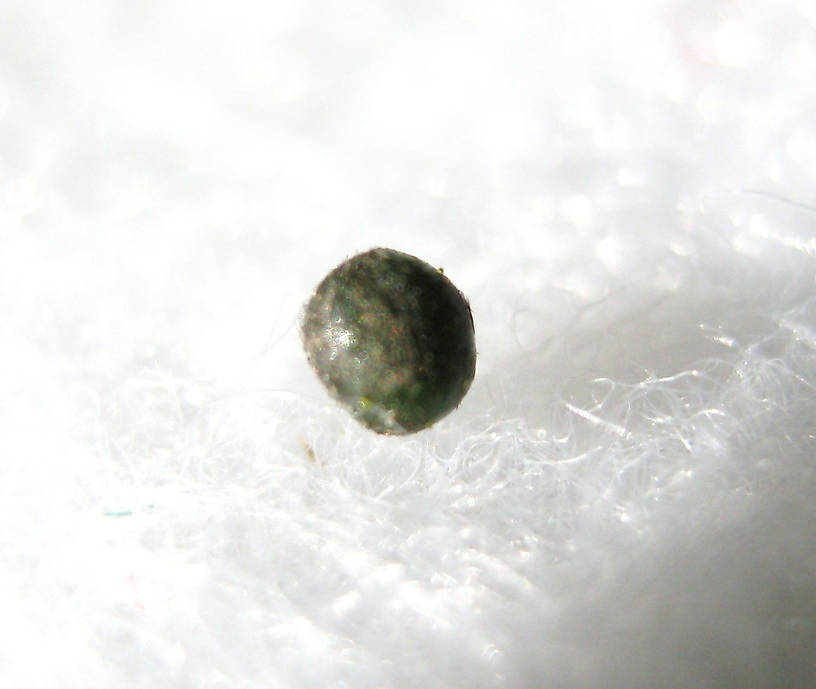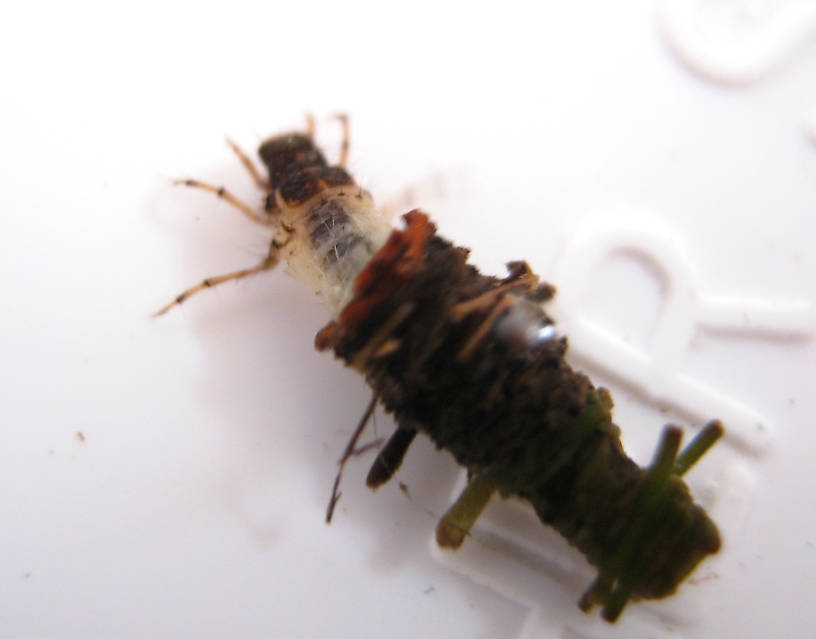
Blue-winged Olives
Baetis
Tiny Baetis mayflies are perhaps the most commonly encountered and imitated by anglers on all American trout streams due to their great abundance, widespread distribution, and trout-friendly emergence habits.
Featured on the forum

This wild-looking little thing completely puzzled me. At first I was thinking beetle or month larva, until I got a look at the pictures on the computer screen. I made a couple of incorrect guesses before entomologist Greg Courtney pointed me in the right direction with Psychodidae. He suggested a possible genus of Thornburghiella, but could not rule out some other members of the tribe Pericomini.

Troutnut is a project started in 2003 by salmonid ecologist Jason "Troutnut" Neuswanger to help anglers and
fly tyers unabashedly embrace the entomological side of the sport. Learn more about Troutnut or
support the project for an enhanced experience here.
Caddisfly Species Lepidostoma podagrum (Little Brown Sedges)
This species can be distinguished from other Lepidostoma by its swollen & scaly foretibiae. This is an important species in some western locales and often precipitates excellent angling opportunities. See the Lepidostoma genus hatch page for information on habitat and life history.
Species Range
Specimens of the Caddisfly Species Lepidostoma podagrum
1 Male Adult
1 Female Adult

These specimens are still alive, just very cold, so the colors are accurate. I put them in the freezer for a bit to settle them down and overdid it a little:)
2 Larvae
Start a Discussion of Lepidostoma podagrum
Caddisfly Species Lepidostoma podagrum (Little Brown Sedges)
Species Range
Common Names
Resources
- NatureServe
- Integrated Taxonomic Information System
- Global Biodiversity Information Facility
- Described by McLachlan (1871)




